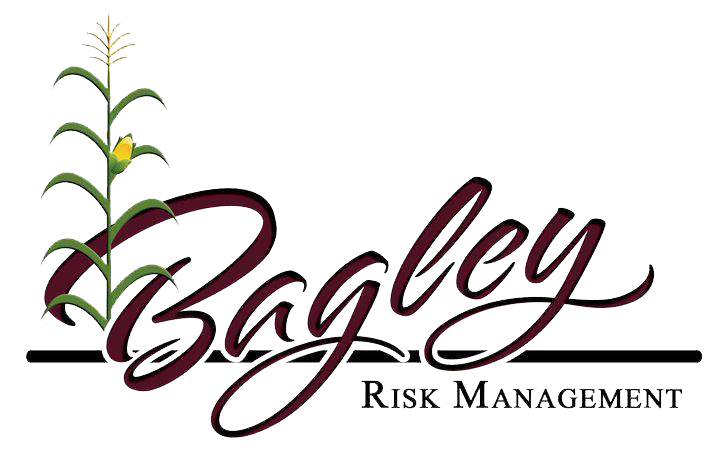5 Simple Techniques For Bagley Risk Management
5 Simple Techniques For Bagley Risk Management
Blog Article
The Of Bagley Risk Management
Table of ContentsGetting My Bagley Risk Management To WorkThe Of Bagley Risk ManagementThe Basic Principles Of Bagley Risk Management Unknown Facts About Bagley Risk ManagementThe 5-Second Trick For Bagley Risk Management
In this manner, if rates do drop below that break-even point by the end day, insurance policy holders are safeguarded against a loss. This is extremely comparable to the way feedlots run, though they make use of a conventional hedge. As soon as a rancher contracts their livestock with a barnyard, they hedge those livestock to secure the revenue factor.This will certainly be countered by the raised worth of the livestock., herdsmans secure against a decline in the futures board, but don't shed out on the greater return when costs go up.
They do this by picking a reduced percent of the projected finishing value - LRP insurance. This is a wonderful approach for those looking for reduced costs rates or who have a higher threat resistance as a result of solid financial health and wellness. This technique may not shield productivity, yet it can secure against serious market drops
There is not a great deal of defense or protection on a month-to-month basis, but if there is a serious crash, manufacturers have the comfort that originates from recognizing they will only be responsible for a particular quantity out of pocket. Simply keep in mind, expect the most effective yet get ready for the worst.
Bagley Risk Management Things To Know Before You Get This

Feeder livestock can be covered up to a 900-pound anticipated end weight and fed livestock can be covered up to a 1,400-pound end weight. With a number of weight courses to choose from, it is feasible to cover animals with the feedlot to the packer rail.
Applications can take a number of days to procedure and just loading one out does not lock the candidate into a policy. As soon as the application is approved and prepared, the LRP recommendation, with its end date and predicted ending worth, can be secured rapidly. This permits ranchers to cover calf bones when the rate is best for their market threat management objectives.
Image Courtesy USDA-NRCS Costs for calf bones, feeder cattle and completed livestock have established some brand-new records this loss and early wintertime. A mix of situations has actually sped up these historic rates. There more tips here is presently a great deal of mindful optimism on the part of cow-calf manufacturers as they look at the future.
Rumored Buzz on Bagley Risk Management

There are some advantages to manufacturers in utilizing LRP insurance policy as compared to a traditional feeder cattle agreement or purchase of an alternative - What is LRP. One is the adaptability in the number of cattle that can be guaranteed. There is no lower limitation to the variety of cattle that can be guaranteed
There is no obligation to offer cattle on which you have bought LRP Feeder Livestock coverage. You may pick to keep possession and still be qualified for the indemnity needs to the Actual End Worth fall below your Protection Rate. You might market cattle covered by LRP at any moment, provided the transfer of ownership does not occur more than 60 days before the LRP Contract End Date.
If cattle perish and your Ag, Danger Consultant is informed within 72 hours of you finding out of the death, the protection continues to be in result, and the manufacturer is qualified for indemnities as a result of rate loss, also on those pets which died. Yes! Calf bones can currently be covered prior to hooves hit the ground.
An Unbiased View of Bagley Risk Management

Applications ensure newbie consumers can be pre-approved to compose an LRP plan It is free! Step 2) Lock in an Unique Insurance Coverage Endorsement (SCE) when you discover a quote that fulfills your objectives (LRP insurance). With each other, we'll protect your investment.
With the continuous change and changability of the marketplace, Livestock Danger Protection (LRP) is something all livestock manufacturers must consider. The primary purpose of LRP is to secure versus the unanticipated descending rate activity in the market by establishing a base upon any kind of given date and type of cattle you want to insure.
The Greatest Guide To Bagley Risk Management
There are a range of protection level alternatives varying from 70 to one hundred percent of the anticipated ending value (https://www.gaiaonline.com/profiles/bagleyriskmng/46565340/). At the end of the selected insurance coverage period, if the actual ending value is listed below the insurance coverage cost, you will certainly be paid an indemnity for the distinction in rate. Manufacturer anticipates to market 1,000 head of 11cwt livestock and picks coverage of $66
As of 2020, LRP (Cattle) is now available in all states when the market is available. 1. Feeder Livestock with finishing weights under 600lbs or 600lbs-900lbs, and 2. Fed Livestock with ending weights between 1,000lbs-1,400 pounds that will certainly be marketed for massacre near the end of the insurance coverage period. whereas livestock insurance does.
Report this page